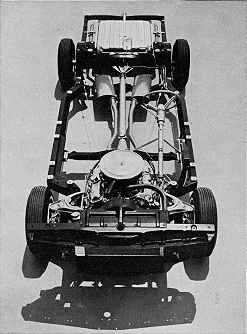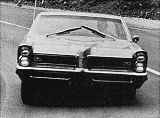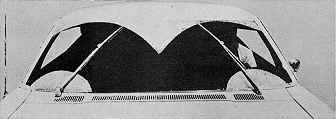We had an opportunity to drive the GP in the wet, which we always like to do with cars we test. Traction and general adhesion were of a high standard, even though the car didn't have a limited-slip differential. Pontiac's new articulated wipers do an excellent job—no skipping or chattering. Watching them park themselves is an eerie experience. They move very slowly the last few degrees and gingerly avoid one another as if there were some sort of intelligent communication between them. The large, concave rear window drains well, maintaining good visibility in heavy downpours.
Fuel consumption was less than the 1963 GP we tested. Gas mileage varied from a low of 10.5 mpg to a high of 14.6. Average for the 993-mile test was 11.9 mpg. The test car had an optional vacuum gauge, with the higher readings marked "economy." If you keep the needle in this zone, you'll actually get better mileage, although it takes a good deal of restraint.
One thing that impressed us very much was the Grand Prix's silence and smoothness. You don't have to keep cranking the radio volume up with increasing speed to hear it. Ride is very soft, but we think we'd like the optional (around $16) stiffer springs and shocks.
If your taste in cars runs toward quietness and luxury with performance and personality all wrapped up in rakish style, take a good look at the Grand Prix.
/MT
|

New on Pontiacs for 1965, the swept-hip perimeter frame allows occupants more space for lower overall height, reduces weight. |

Grand Prix leans moderately, considering its soft ride and over-two-ton weight. |

Pontiac's new articulated wipers sweep a remarkably high percentage of windshield's large surface. What's more important, they clean the critical areas in the corners. |
PHOTOS BY BOB D'OLIVO, PAT BROLIER

GRAND PRIX LOOKS GOOD FROM ANY ANGLE, NEEDN'T BLUSH TO ANYONE. TAIL LIGHTS ARE HIDDEN AS BEFORE, WITH FENDER SKIRTS ANEW.
|
|